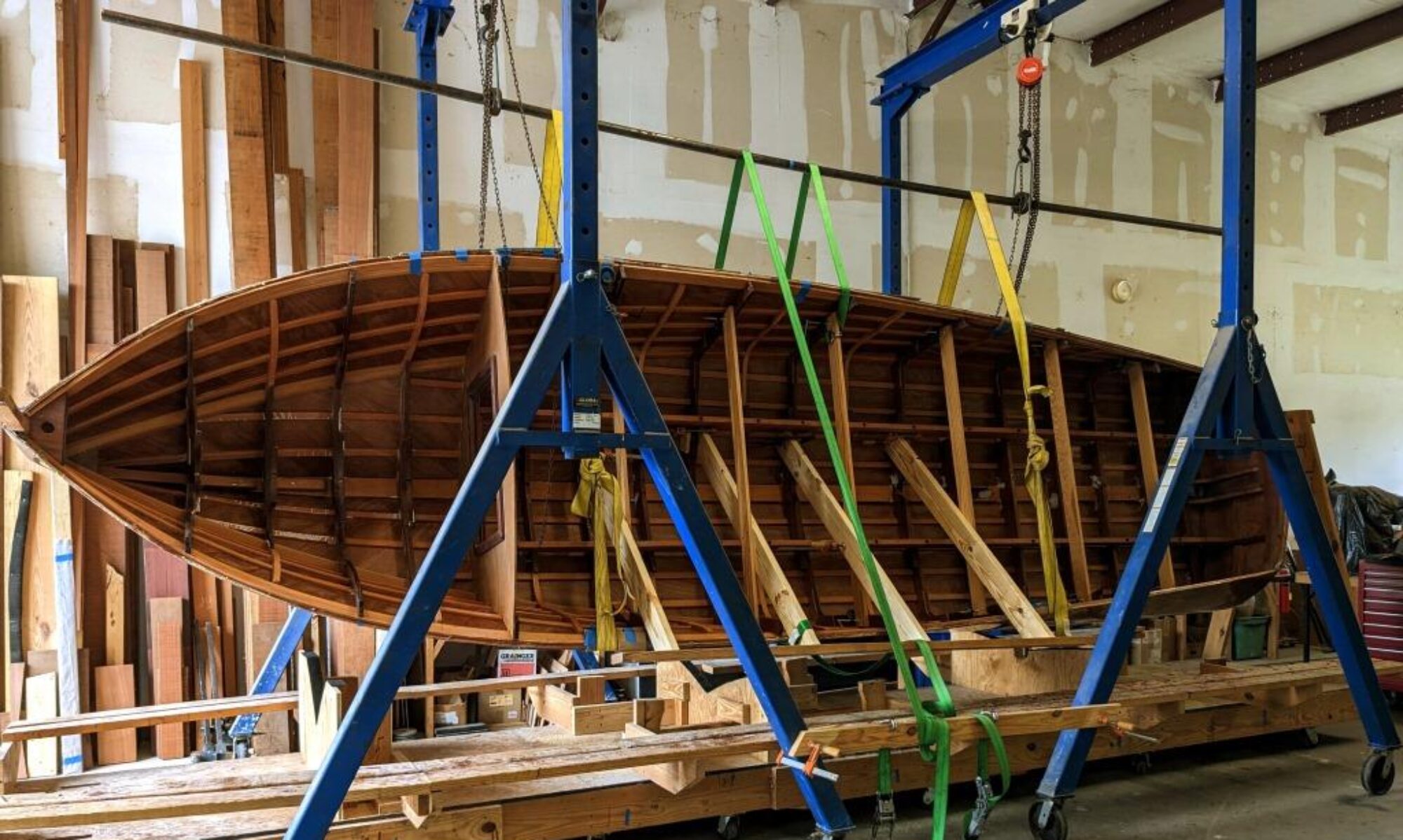
After three layers of 1/8″ planking, it’s time to fair the hull. In some builds, particularly those with a painted hull, you might wait until after the final layer is on. But with only 3/16″ thickness in the final layer of mahogany, you can see how it’s advantageous to get the hull nice and fair before it goes on. Sanding through the mahogany to get a hump out would be disastrous.
Look closely at the picture above and you can see a solid patch of the fairing compound at the chine. Using a batten, I found the curve was a bit flat here, so I added fairing compound with a notched trowel to build thickness. This sands easily to the shape you want, then fill it with more fairing compound.

This means scrape-filling the entire hull at least two times, with sanding in between. So I mix up some fairing compound (I use WEST System with 407 filler) and scrape it onto the hull with an 8″ taping knife. Then I spend some quality time with sanding longboards like the ones pictured at left. I’ve never been afflicted with “tennis elbow”, but I do get “sanding elbow” at this stage of the boatbuilding process. That’s why I need young people to help me!

Looks great. Have you an extra lamination layer in the bottom compared to the topsides?
Cheers
Chris
No. Sometimes you do, but in this case the design calls for a 9/16″ thick bottom and 1/2″ topsides. So I have 3 layers of 1/8″ planking, followed by 3/16″ mahogany. I could plane the mahogany to 1/8″ for the topsides. I haven’t decided if I want to do that, or just have a little margin in the topsides thickness. It really depends on how well the 3/16″ behaves when going around the curves of the topsides hull. That extra 1/16″ of thickness makes a big difference in stiffness. By the way, the deck will only be 3/8″ thick.
This was a very encouraging post for me! I was fretting about exactly the same flat spot on the chine on my model and wondering how to fix it. After seeing your post I got to work with 410 filler, which fortunately is very easy to sand to shape!
I use 407 micro-balloons for these kinds of “structural” filling and fairing because that’s what I was taught. It’s pretty easy to sand, but provides more strength than microlight. You might want to check with WEST System technical support before you use microlight on your full sized boat, Steve. Those guys are very helpful and easy to talk to. I always recommend calling them for any questions about this kind of thing. I’ve consulted them many times.
Good idea, thanks Tim!
For the second and third layers did you follow a diagonal pattern all the way along the length of the boat?
Yes I did. If you remember, wood is very strong in tension. So the 45 degree diagonal pattern, alternating from layer to layer, really adds strength to your monocoque structure.
Does anyone know of a boat called xylem? Think it was, featured on a magazine cover a long time ago? Lightweight in comparison to glass or glass core hulls it was 90% wood veneer 10% fiberglass – modern power, and basically a 30′ piece of plywood, all one piece the cap and upper deck too…